3,5-二甲基苄基溴,3,5-Dimethylbenzyl bromide,≥97.0%
产品编号:BJHY-A14267| CAS NO:27129-86-8| MDL NO:MFCD00013539| 分子式:C9H11Br| 分子量:199.09
本网站销售的所有产品仅用于工业应用或者科学研究等非医疗目的,不可用于人类或动物的临床诊断或者治疗,非药用,非食用,
| 产品名称 | 3,5-二甲基苄基溴 |
|---|---|
| 英文名称 | 3,5-Dimethylbenzyl bromide,≥97.0% |
| CAS编号 | 27129-86-8 |
| 产品熔点 | 36-40 °C |
| 产品沸点 | 231.7±9.0 °C at 760 mmHg |
| 产品密度 | 1.3±0.1 g/cm3 |
| 产品闪点 | 99.0±11.8 °C |
| 精确质量 | 198.004410 |
| LogP | 3.84 |
| 蒸气压 | 0.1±0.4 mmHg at 25°C |
| 折射率 | 1.554 |
| 稳定性 | 如果遵照规格使用和储存则不会分解 避免接触氧化物,水分/潮湿,碱,胺,酒精 |
| 储存条件 | 保持贮藏器密封 放入紧密的贮藏器内,储存在阴凉,干燥的地方 |
相关文档
化学品安全说明书(MSDS)
下载MSDS质检证书(COA)
相关产品
| 符号 |
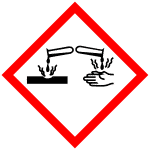
GHS05 |
|---|---|
| 信号词 | Danger |
| 危害声明 | H314 |
| 警示性声明 | P280-P305 + P351 + P338-P310 |
| 危害码 (欧洲) | C:Corrosive; |
| 风险声明 (欧洲) | R34 |
| 安全声明 (欧洲) | S45-S36/37/39-S26 |
| 危险品运输编码 | 3265 |
| 包装等级 | III |
| 危险类别 | 8 |
| 海关编码 | 29036990 |
Synonym: Section 2 - COMPOSITION, INFORMATION ON INGREDIENTS
Risk Phrases: 34 Section 3 - HAZARDS IDENTIFICATION EMERGENCY OVERVIEW
Causes burns. Potential Health Effects Eye: Causes eye burns. Lachrymator (substance which increases the flow of tears). Skin: Causes skin burns. Ingestion: Causes gastrointestinal tract burns. Inhalation: Causes chemical burns to the respiratory tract. Inhalation may be fatal as a result of spasm, inflammation, edema of the larynx and bronchi, chemical pneumonitis and pulmonary edema. May cause burning sensation, coughing, wheezing, laryngitis, shortness of breath, headache, nausea, and vomiting. Chronic: Chronic exposure may cause effects similar to those of acute exposure. Section 4 - FIRST AID MEASURES Eyes: Immediately flush eyes with plenty of water for at least 15 minutes, occasionally lifting the upper and lower eyelids. Get medical aid immediately. Skin: Get medical aid immediately. Immediately flush skin with plenty of water for at least 15 minutes while removing contaminated clothing and shoes. Ingestion: Get medical aid immediately. Do NOT induce vomiting. If conscious and alert, rinse mouth and drink 2-4 cupfuls of milk or water. Inhalation: Get medical aid immediately. Remove from exposure and move to fresh air immediately. If not breathing, give artificial respiration. If breathing is difficult, give oxygen. Notes to Physician: Treat symptomatically and supportively. Section 5 - FIRE FIGHTING MEASURES General Information: As in any fire, wear a self-contained breathing apparatus in pressure-demand, MSHA/NIOSH (approved or equivalent), and full protective gear. Extinguishing Media: Use water spray, dry chemical, carbon dioxide, or chemical foam. Section 6 - ACCIDENTAL RELEASE MEASURES General Information: Use proper personal protective equipment as indicated in Section 8. Spills/Leaks: Vacuum or sweep up material and place into a suitable disposal container. Avoid runoff into storm sewers and ditches which lead to waterways. Section 7 - HANDLING and STORAGE Handling: Do not breathe dust, vapor, mist, or gas. Do not get in eyes, on skin, or on clothing. Storage: Store in a cool, dry place. Store in a tightly closed container. Corrosives area. Section 8 - EXPOSURE CONTROLS, PERSONAL PROTECTION Engineering Controls: Facilities storing or utilizing this material should be equipped with an eyewash facility and a safety shower. Use adequate ventilation to keep airborne concentrations low. Exposure Limits CAS# 27129-86-8: Personal Protective Equipment Eyes: Not available. Skin: Wear appropriate protective gloves to prevent skin exposure. Clothing: Wear appropriate protective clothing to prevent skin exposure. Respirators: Follow the OSHA respirator regulations found in 29 CFR 1910.134 or European Standard EN 149. Use a NIOSH/MSHA or European Standard EN 149 approved respirator if exposure limits are exceeded or if irritation or other symptoms are experienced. Section 9 - PHYSICAL AND CHEMICAL PROPERTIES Physical State: Solid Color: white Odor: Not available. pH: Not available. Vapor Pressure: Not available. Viscosity: Not available. Boiling Point: 101 - 103 deg C @ 8 mmHg Freezing/Melting Point: 38 - 40 deg C Autoignition Temperature: Not available. Flash Point: Not available. Explosion Limits, lower: Not available. Explosion Limits, upper: Not available. Decomposition Temperature: Solubility in water: Specific Gravity/Density: Molecular Formula: C9H11Br Molecular Weight: 199.09 Section 10 - STABILITY AND REACTIVITY Chemical Stability: Stable under normal temperatures and pressures. Conditions to Avoid: Dust generation, excess heat. Incompatibilities with Other Materials: Oxidizing agents, bases, alcohols, amines, steel. Hazardous Decomposition Products: Carbon monoxide, carbon dioxide, hydrogen bromide. Hazardous Polymerization: Has not been reported Section 11 - TOXICOLOGICAL INFORMATION RTECS#: CAS# 27129-86-8 unlisted. LD50/LC50: Not available. Carcinogenicity: 3,5-Dimethylbenzyl bromide - Not listed by ACGIH, IARC, or NTP. Section 12 - ECOLOGICAL INFORMATION Other No information available. Section 13 - DISPOSAL CONSIDERATIONS Dispose of in a manner consistent with federal, state, and local regulations. Section 14 - TRANSPORT INFORMATION IATA Shipping Name: CORROSIVE LIQUID, N.O.S.* Hazard Class: 8 UN Number: 1760 Packing Group: II IMO Shipping Name: CORROSIVE LIQUID, N.O.S. Hazard Class: 8 UN Number: 1760 Packing Group: II RID/ADR Shipping Name: Not regulated. Hazard Class: UN Number: Packing group: Section 15 - REGULATORY INFORMATION European/International Regulations European Labeling in Accordance with EC Directives Hazard Symbols: C Risk Phrases: R 34 Causes burns. Safety Phrases: S 26 In case of contact with eyes, rinse immediately with plenty of water and seek medical advice. S 36/37/39 Wear suitable protective clothing, gloves and eye/face protection. S 45 In case of accident or if you feel unwell, seek medical advice immediately (show the label where possible). WGK (Water Danger/Protection) CAS# 27129-86-8: No information available. Canada None of the chemicals in this product are listed on the DSL/NDSL list. CAS# 27129-86-8 is not listed on Canada's Ingredient Disclosure List. US FEDERAL TSCA CAS# 27129-86-8 is not listed on the TSCA inventory. It is for research and development use only. SECTION 16 - ADDITIONAL INFORMATION N/A |
|
~61% 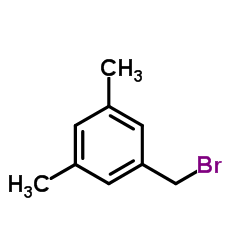
27129-86-8 |
| 文献:Cavanagh, Katie L.; Glover, Stephen A.; Price, Helen L.; Schumacher, Rhiannon R. Australian Journal of Chemistry, 2009 , vol. 62, # 7 p. 700 - 710 |
|
~87% 
27129-86-8 |
| 文献:Thepot, Jean-Yves; Lapinte, Claude Journal of Organometallic Chemistry, 2001 , vol. 627, # 2 p. 179 - 188 |
|
~49% 
27129-86-8 |
| 文献:Heropoulos, Georgios A.; Cravotto, Giancarlo; Screttas, Constantinos G.; Steele, Barry R. Tetrahedron Letters, 2007 , vol. 48, # 18 p. 3247 - 3250 |
|
~% 
27129-86-8 |
| 文献:Nishiwaki, Hisashi; Nakagawa, Yoshiaki; Takeda, David Y.; Okazawa, Atsushi; Akamatsu, Miki; Miyagawa, Hisashi; Ueno, Tamio; Nishimura, Keiichiro Pest Management Science, 2000 , vol. 56, # 10 p. 875 - 881 |
|
~% 
27129-86-8 |
| 文献:Shcherbina, F. F. J. Gen. Chem. USSR (Engl. Transl.), 1988 , vol. 58, # 6 p. 1336 - 1340,1188 - 1192 |
|
~%
详细
|
| 文献:Herr et al. Journal of the American Chemical Society, 1957 , vol. 79, p. 4229,4230 |


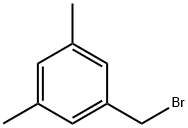

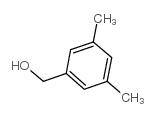
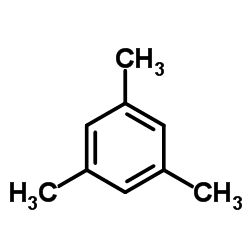
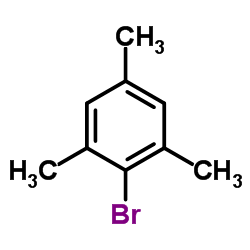
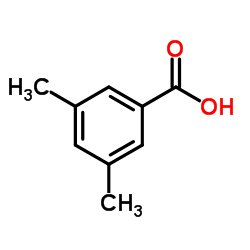
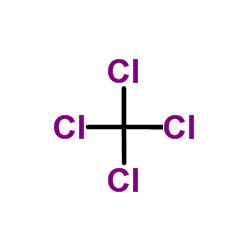
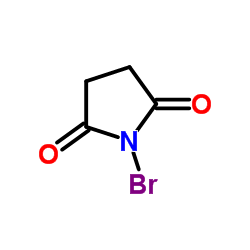
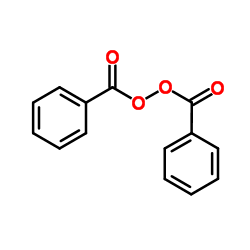





 浙公网安备 33010802013016号
浙公网安备 33010802013016号